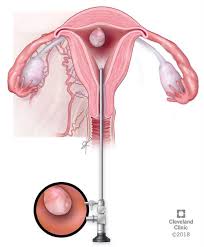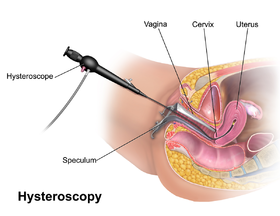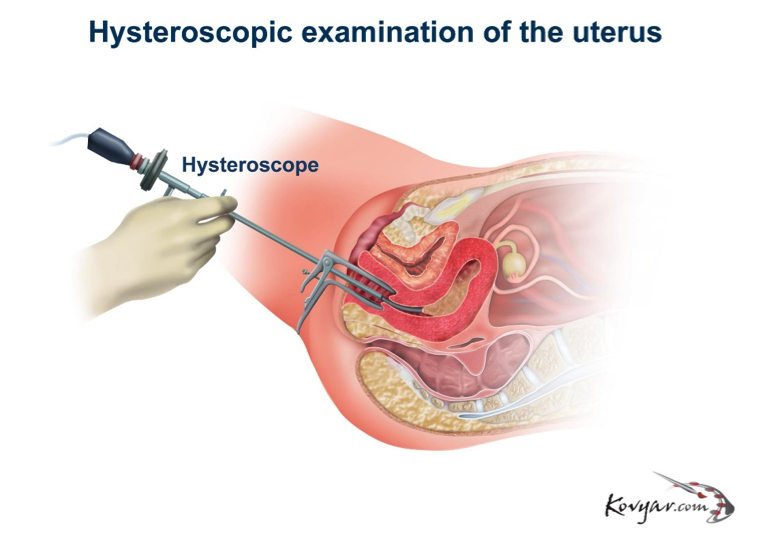



Hysteroscopy is a procedure that allows your doctor to look inside your uterus in order to diagnose and treat causes of abnormal bleeding. Hysteroscopy is done using a hysteroscope, a thin, lighted tube that is inserted into the vagina to examine the cervix and inside of the uterus
The procedure itself can take anywhere from just 5 minutes to 30 minutes depending on what's being done. For most diagnostic-only purposes, the hysteroscopy can be done in your doctor's office with just local or regional anesthesia. This is typically true for the simple removal of small polyps as well.
A hysteroscopy is a procedure in which your doctor inserts a small-diameter device into your uterus. This device has a light and a small camera on the end to allow the doctor to see inside your uterus.
There are a number of situations in which your doctor may recommend this procedure. It can be used for either surgical or diagnostic purposes.
It may be used:

Your primary doctor may refer you to a specialist for this procedure. The procedure will take place with you in the same position as you’re normally in for a gynecological exam, with your feet in the stirrups at the end of the exam table.
The doctor will first spread the cervix with a tool called a speculum. This is also like what happens during a gynecological exam.
The doctor will then insert the hysteroscopy device in through your vaginal opening. They will continue moving it through the cervix and then into the uterus.
A liquid or carbon dioxide gas will then be gently sent into your uterus through the device to clear the surface and to help widen it slightly.
The light and camera on the end of the hysteroscope allow the doctor to see the uterus and fallopian tubes. This allows them to diagnose any issues or to perform any surgical procedures necessary.
If the procedure is being used for surgery, the surgical devices will also be put through the hysteroscope tube to perform the surgery.
The procedure itself can take anywhere from just 5 minutes to 30 minutes depending on what’s being done.
For most diagnostic-only purposes, the hysteroscopy can be done in your doctor’s office with just local or regional anesthesia. This is typically true for the simple removal of small polyps as well. When the hysteroscopy is being used in conjunction with a more in-depth surgical procedure, it may be done in a hospital. In that case, the doctor will use a regional or general anesthesia, depending on the extent of the surgery that’s required.
The purpose of the hysteroscopy will determine the length of recovery. However, there are some general things that are common after any hysteroscopy procedure. You may experience the following:
If your procedure requires general anesthesia, then it’s still an outpatient procedure. You’ll be able to return home after a few hours. Your doctor will only require an overnight stay in the hospital for observation if you have had a past reaction to anesthesia.

In some cases, your doctor may prescribe a pain medication to make recovery easier. If surgery is involved, then your doctor may have you rest for a day or two before resuming a normal schedule. Follow your doctor’s instructions for recovery. For a hysteroscopy that isn’t purely diagnostic, you should refrain from sexual activity for about a week. This helps reduce the chance of infection.
A hysteroscopy is considered a fairly safe procedure with minimal complications. However, it’s still considered surgery. Because of this there are some possible complications, though they are not common. They include: